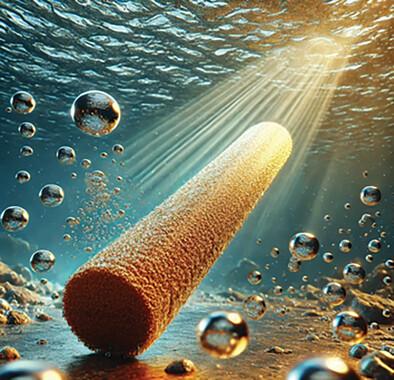Engineering Electron Lifetime for High-Performance Heterostructured 1D CdS Photocatalyst
IF 13
2区 材料科学
Q1 CHEMISTRY, MULTIDISCIPLINARY
引用次数: 0
Abstract
The development of high-performance photocatalysts is essential for advancing sustainable hydrogen production. In the present work, an innovative approach to electron lifetime engineering aimed at enhancing the photocatalytic performance of 1D CdS nanowires by strategically incorporating Ni and titanium nitride (TiN) layers. It demonstrates the electron lifetime mechanism of 1D photocatalyst can be optimized through the introduction of uneven surface and heterojunction. The lifetime of electrons is influenced by the interplay between geometry and electronic structure, directly correlating with photocatalytic efficiency in an exponential decay pattern. Time-correlated single photon counting (TCSPC) measurements provide detailed insights into recombination events and non-radiative properties. Transmission electron microscopy (TEM) and ultraviolet photoemission spectroscopy (UPS) analyses reveal that the prolonged electron lifetime in CdS/Ni/TiN photocatalysts is attributed to the combination of the uneven surface and the passivation of surface energy state on CdS. The single-molecule surface catalytic sites are also observed from super-resolution fluorescence imaging. This perspective first illustrates an integrated discussion on hydrogen production, optical properties, electronic structure, and surface-active sites. The optimal heterostructured CdS achieves a 20.55-fold improvement in hydrogen production. Electron lifetime engineering offers a promising pathway in high-performance 1D photocatalysts for hydrogen production and other energy conversion applications.

求助全文
约1分钟内获得全文
求助全文
来源期刊

Small
工程技术-材料科学:综合
CiteScore
17.70
自引率
3.80%
发文量
1830
审稿时长
2.1 months
期刊介绍:
Small serves as an exceptional platform for both experimental and theoretical studies in fundamental and applied interdisciplinary research at the nano- and microscale. The journal offers a compelling mix of peer-reviewed Research Articles, Reviews, Perspectives, and Comments.
With a remarkable 2022 Journal Impact Factor of 13.3 (Journal Citation Reports from Clarivate Analytics, 2023), Small remains among the top multidisciplinary journals, covering a wide range of topics at the interface of materials science, chemistry, physics, engineering, medicine, and biology.
Small's readership includes biochemists, biologists, biomedical scientists, chemists, engineers, information technologists, materials scientists, physicists, and theoreticians alike.
 求助内容:
求助内容: 应助结果提醒方式:
应助结果提醒方式:


